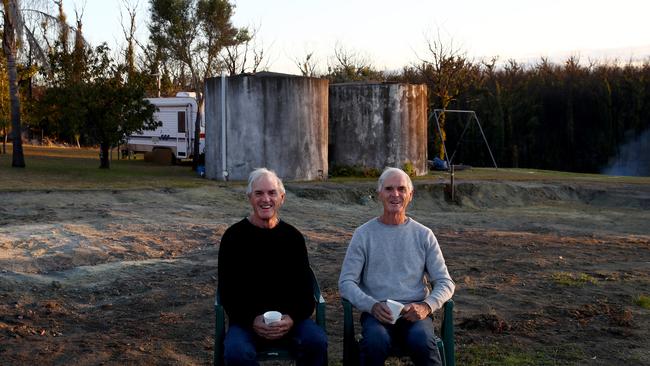‘Disaster mitigation’ key learning from Black Summer bushfires: Suncorp
Insurance giant Suncorp is calling on the Morrison government to ramp up its investment in disaster resilient infrastructure.

Insurance giant Suncorp is calling on the Morrison government to ramp up its investment in disaster resilient infrastructure after an internal report found some regional communities affected by the Townsville floods, Black Summer bushfires and east coast hailstorms took a 20 per cent hit to their GDP.
The report, Economic recovery after disaster strikes, examined the three severe natural disaster events in Australia and found some regional communities would never have recovered without insurance and the economic stimulus it provided for a more rapid return to normal economic activity.
Townsville in Queensland and East Gippsland in Victoria were the hardest hit by disaster, suffering a 20 and 19 per cent reduction in GDP respectively.
Suncorp Group chief executive Steve Johnston told The Australian the commonwealth needed to focus more on prevention rather than the clean-up, but insurance was not enough to safeguard communities as catastrophic natural disasters become increasingly prevalent.
“Disaster mitigation, rather than disaster clean-up, is what Australia needs to focus on,” Mr Johnston said. “Preparing our homes and communities to better withstand extreme weather is a smarter investment than rebuilding, yet governments spend 97 per cent of disaster funding on mopping up and just 3 per cent on preparation.”
It comes as Environment Minister Sussan Ley will on Monday use her Australia Day address to the international Climate Adaptation Summit in The Netherlands via video link to commit the nation to a new national climate resilience and adaptation strategy.
She will formally pledge to join the United Kingdom and more than 118 countries in the “call for action” on raising ambition for climate adaptation and resilience. “Climate adaptation is about taking practical actions to help our environment, our communities and our economy deal with the impacts of climate change that are already taking place,” she will say.
“We are focused on steps we can take now and in the future to create a more resilient Australia.”
Mr Johnston said the May budget would be a great opportunity to create more resilient communities and reallocate government funding towards preparation. “We don’t think the balance is right,” he said.
“The overall financial burden might not change — just the allocation of it and we think the government should focus on a number of preventive measures such as improved public infrastructure, levies in communities prone to flooding and improve forestry management.”
He noted the economic and material impact highlighted in the report, compiled by SGS Economics and Planning, didn’t capture the human cost or “incalculable” psychological impacts of natural disasters.
He said the imposition of inefficient taxes such as stamp duty loaded on to insurance premiums were also pricing people out of the market.
“Taxes on insurance are very inefficient. More and more can’t pay for it and drop of it so when a disaster comes along the government has to pick up the tab,” he said.
“It’s a difficult problem and one that isn’t easy to solve.”




To join the conversation, please log in. Don't have an account? Register
Join the conversation, you are commenting as Logout